Planning a cruise? As a travel advisor, I always remind clients that cruise vacations come in many flavors. Cruise ships can range from enormous floating cities to intimate boutique vessels, and each type offers a completely different experience. Below, we will compare the styles—Ocean Cruise Ships, River Cruise ships and Expedition Cruise ships —explaining their typical amenities, itineraries, cruise lengths and the pros and cons of each.
By understanding the unique features, advantages, and disadvantages of different cruise ships, you can choose the perfect cruise experience that aligns with your interests and preferences. Whether you’re seeking a vibrant onboard experience, cultural enrichment, or tranquility and high-end service, there’s a cruise ship that’s just right for you.
Ocean Cruise Ships:
Mega Ocean Cruise Ship (~5,000–7,600+ Passengers)
Mega Ocean Cruise Ships: Example – Royal Caribbean Int., Wonder of the Seas (5,734 passengers) / Royal Caribbean Int., Icon of the Seas (5,610 passengers)
![]()
Mega Ocean Cruise Ships are the giants of the sea. These floating cities boast resort-style amenities, including multiple pools, water slides, Broadway-style theaters, diverse dining venues, ice rinks, and entire neighborhoods onboard. They are ideal for families and travelers seeking a vibrant onboard experience.
Typical Itineraries: These ships often sail popular sunny routes such as the Caribbean, Mediterranean, and Alaska, with cruises commonly running 7–14 nights. Longer transatlantic and world cruises are also available.
Advantages: Mega ships offer virtually endless amenities and entertainment options for all ages, including water parks, theaters, kids’ clubs, and casinos. They provide great value in terms of inclusions and variety, making them very family-friendly and social, with numerous activities happening throughout the day.
Disadvantages: Due to their size, mega ships can feel crowded and impersonal. Passengers may experience long lines at buffets, elevators, and during lifeboat drills, and it’s easy to feel “lost” in the masses. One-on-one service is limited, and ports of call can be overrun with multiple ships, making shore time feel rushed and destinations less authentic.
Large Ocean Cruise Ship (~2,500–3,499 Passengers)
Large Ocean Cruise Ship: Example – Princess Cruises, Crown Princess – (3,090 passengers)
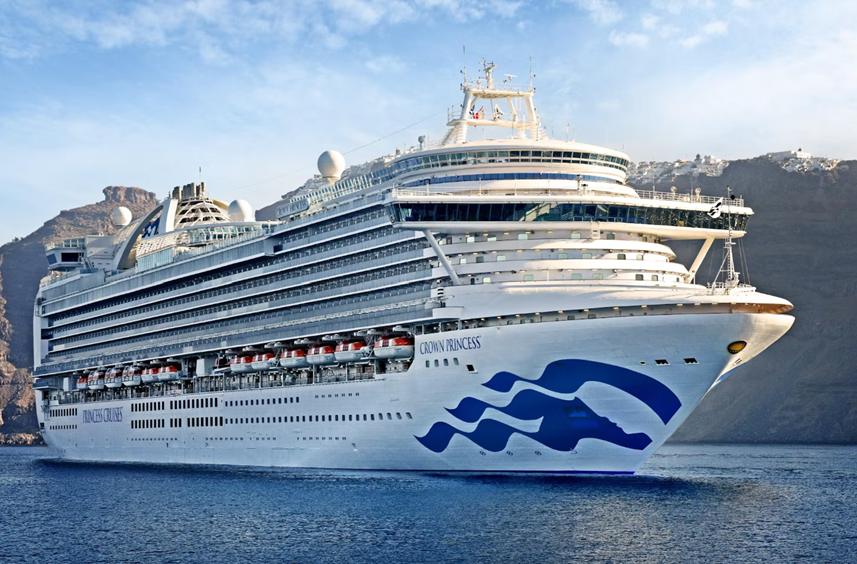
Large Ocean Cruise Ships offer a blend of modern amenities and traditional elegance. These vessels provide multiple dining venues, entertainment options, and contemporary design elements, all while maintaining a more relaxed atmosphere.
Typical Itineraries: Popular routes include the Caribbean, Mediterranean, and Alaska, featuring a mix of sea days and port calls. Cruises commonly run for 7–14 nights.
Advantages: These ships provide a diverse range of activities and dining experiences without the overwhelming scale of mega ships. They’re well-suited for families, couples, and groups seeking variety and comfort.
Disadvantages: While offering numerous amenities, large cruise ships can sometimes feel crowded, and popular areas may experience congestion during peak times. Additionally, they may not access smaller, less-traveled ports, potentially limiting the uniqueness of shore excursions.
Midsize Ocean Cruise Ship (~1,000- 2,500 Passengers)
Mid-Size Ocean Cruise Ship: Example – Royal Caribbean Int., Serenade of the Seas (2,146 passengers)
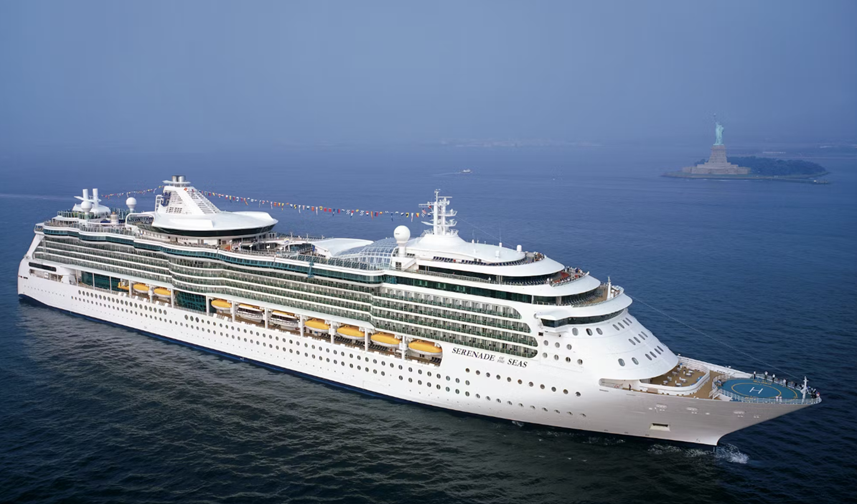
Midsize Ships offer a more intimate setting with personalized service. These ships are perfect for travelers who prioritize destination immersion and cultural experiences. They cater to couples, solo travelers, and small groups looking for a more personalized cruise experience.
Typical Itineraries: Mid-size ocean cruise ships often sail to culturally rich destinations such as Europe, Asia, and South America. Cruises typically last for 7–14 nights, with carefully destination-focused itineraries, that include guided excursions. They feature all-suite accommodations, personalized service, and access to smaller ports:
Advantages: Mid-size ocean cruise ships, focus on destination immersion and cultural enrichment. These ships offer a more intimate setting with personalized service and included excursions.
Disadvantages: While mid-size ships provide a more intimate experience, they may have fewer amenities compared to larger ships. The smaller size can limit the variety of onboard activities and entertainment options.
Small Ocean Cruise Ship (~ < 1000 Passengers)
Small Ocean Cruise Ship: Example – Viking Cruise, Viking Orion (930 Passengers)
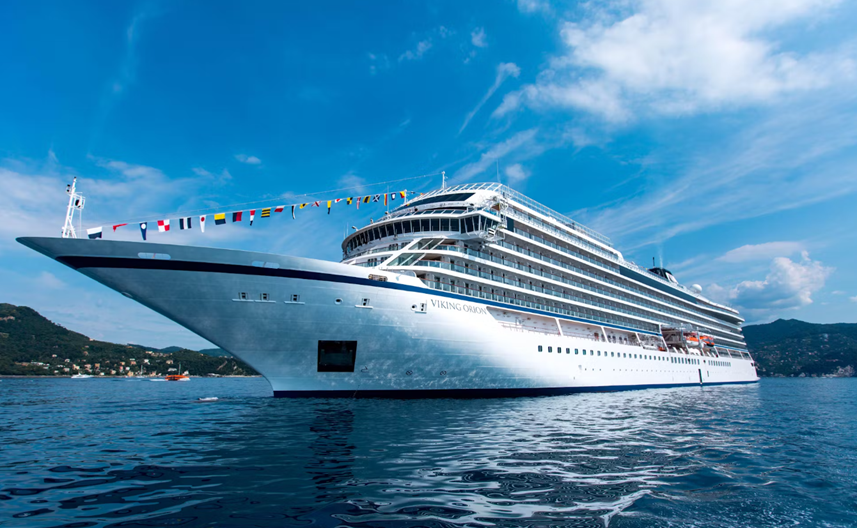
Small ocean cruise ships are perfect for travelers seeking tranquility and high-end service and exclusive experiences. They cater to luxury travelers, couples, and individuals looking for a pampered cruise experience.
Typical Itineraries: Small ocean cruise ships often sail to culturally rich destinations such as Caribbean, Alaska, Mediterranean, Iceland and Antarctica. They offer immersive, destination-focused itineraries that larger ships often cannot access. These cruises typically range from 7 to 14 nights and are ideal for travelers seeking a more intimate and personalized experience.
Advantages: Small cruise ship, provide an ultra-luxurious, personalized experience with access to exclusive ports. These ships offer all-suite accommodations, personalized service, and a tranquil atmosphere.
Disadvantages: While small cruise ships offer a high-end experience, they come with a higher price point. The limited number of passengers can result in fewer onboard activities and entertainment options.
Luxury Ocean Small Ships (~ 200-600 Passengers)
Luxury Ocean Small Ship: Example – Windstar Cruises, Wind Spirit (148 Passengers)
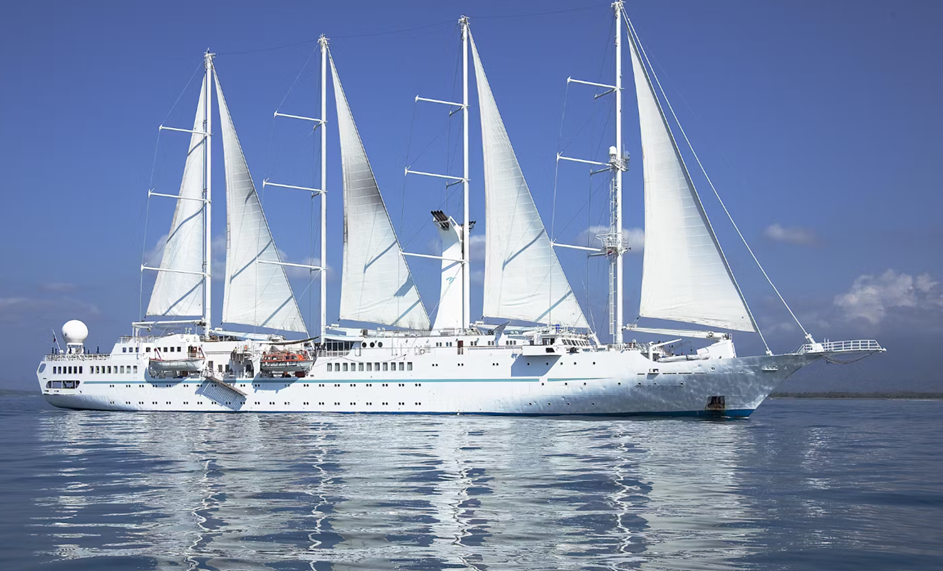
Luxury ocean small cruise ships blend intimate size with high-end service. The focus is on elegance: think gourmet restaurants, plush lounges, and every comfort included. Many luxury lines are truly all-inclusive, covering nearly all meals, premium beverages, gratuities, and even some excursions in the fare.
Typical Itineraries: Luxury ocean small ships sail worldwide, from classic Mediterranean or Caribbean routes to exotic locales (small Mediterranean ports, the fjords of Norway, Asia, Antarctica, etc.). Sailings usually last 7–14 nights, although upscale operators also offer 100+ day world cruises and long voyages.
Advantages: Ultra-attentive service (often one crew member per 1–2 guests), superb cuisine and wine pairings, beautifully appointed suites, and a dress-up elegance at night. Smaller size means more unique port calls that big ships can’t reach. If you want a pampered experience and tend to stay onboard enjoying the ship itself (or want included drinks, gratuities, Wi-Fi, etc.), luxury ships excel.
Disadvantages: Very high price point – double (or more) what a mainstream cruise costs. Less variety in entertainment (no huge water parks or ice rinks). These ships often skew older/retired couples, so they are not ideal for rowdy families or party-seekers. With fewer onboard activities, guests should be content with a quieter pace and fine dining over, say, onboard Broadway shows.
River Cruise Ships
River Cruise Ships (~ 100-250 Passengers)
River Cruise Ship: AmaWaterways, Amamora (156 Passengers)
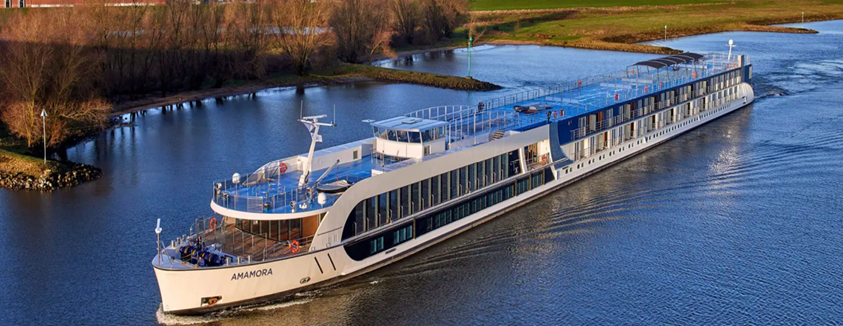
River cruise ships are much smaller (typically 100–200 passengers) and narrow enough to navigate inland rivers. These vessels offer a relaxed, scenic way to see a region.
Typical Itineraries: Classic routes include the Danube, Rhine, Seine, Rhône, Douro (in Europe), as well as exotic rivers like the Mekong, Nile, and Amazon. River ships frequently dock right in city centers, so you unpack once and visit a new town each day. Most river voyages last about 7–14 days, often with included guided excursions at each stop.
Advantages: Scenic and cultural immersion – you often dock in the heart of historic cities or charming villages. Smaller ships mean quieter, more intimate voyages and personalized service (high staff-to-guest ratio). Packed itineraries cover many sights; tours and many meals are usually included. No big seas to sway in, and shore excursions make it easy to explore.
Disadvantages: Very limited public space and no splashy entertainment (no Broadway shows or large theaters). Cabins can be small and decks are compact. River cruising is seasonal (rivers freeze or flood). You have a fixed schedule of excursions (less free time), and fares can be higher per passenger since so much is included.
Expedition Cruise Ships
Expedition Ships (~ 12-200 Passengers)
Expedition Ship: Example – National Geographic, Endurance (126 Passengers)
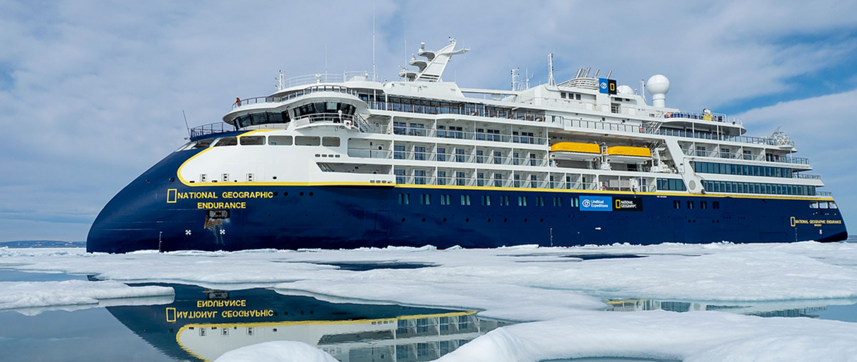
Expedition cruises are designed for adventure and wildlife, not resort-style leisure. These are small, rugged ships equipped with reinforced hulls and specialized equipment.
Typical Itineraries: Target remote natural frontiers: Antarctica, the Arctic (Norwegian fjords, Greenland, Svalbard), the Galapagos Islands, Amazon basin, polar bears in Canada, etc. Passengers expect active exploration – each day might include zodiac landings, kayaking, or hiking led by experts (biologists, historians, naturalists). Many expedition trips are 10–15 days long (timed to summer seasons in polar regions or wildlife seasons in the tropics).
Advantages: Unique, bucket-list destinations and once-in-a-lifetime experiences (icebergs, penguins, polar bears, whales, etc.). Expert guides and small groups make it educational and engaging. You go places few tourists see. Ships are usually very sturdy, and staff are trained for expedition safety.
Disadvantages: Very expensive (specialized gear and permits drive up cost). Fewer frills: accommodations and dining are comfortable but simpler (no Broadway shows). Weather and wildlife are unpredictable, so itineraries may change. Days can be physically demanding. Some people may get seasick in rough waters, and the dress code is very casual/outdoor gear.
Which One Is Right For You?
Each cruise style has its niche and vibe. River cruises are perfect for culture buffs and scenic sightseeing at a gentle pace. Expedition ships attract adventure travelers eager for wildlife and exploration. Luxury small ocean ships appeal to travelers who prioritize comfort, cuisine, and personalized service. Mega and large Ocean ships appeal to multi-generational families, couples and individuals seeking large resort-style amenities. By matching the ship type to your interests—whether it’s roller coasters at sea or a quiet vineyard tour ashore—you’ll ensure a cruise that feels just right for you.

Hi, this is a comment.
To get started with moderating, editing, and deleting comments, please visit the Comments screen in the dashboard.
Commenter avatars come from Gravatar.